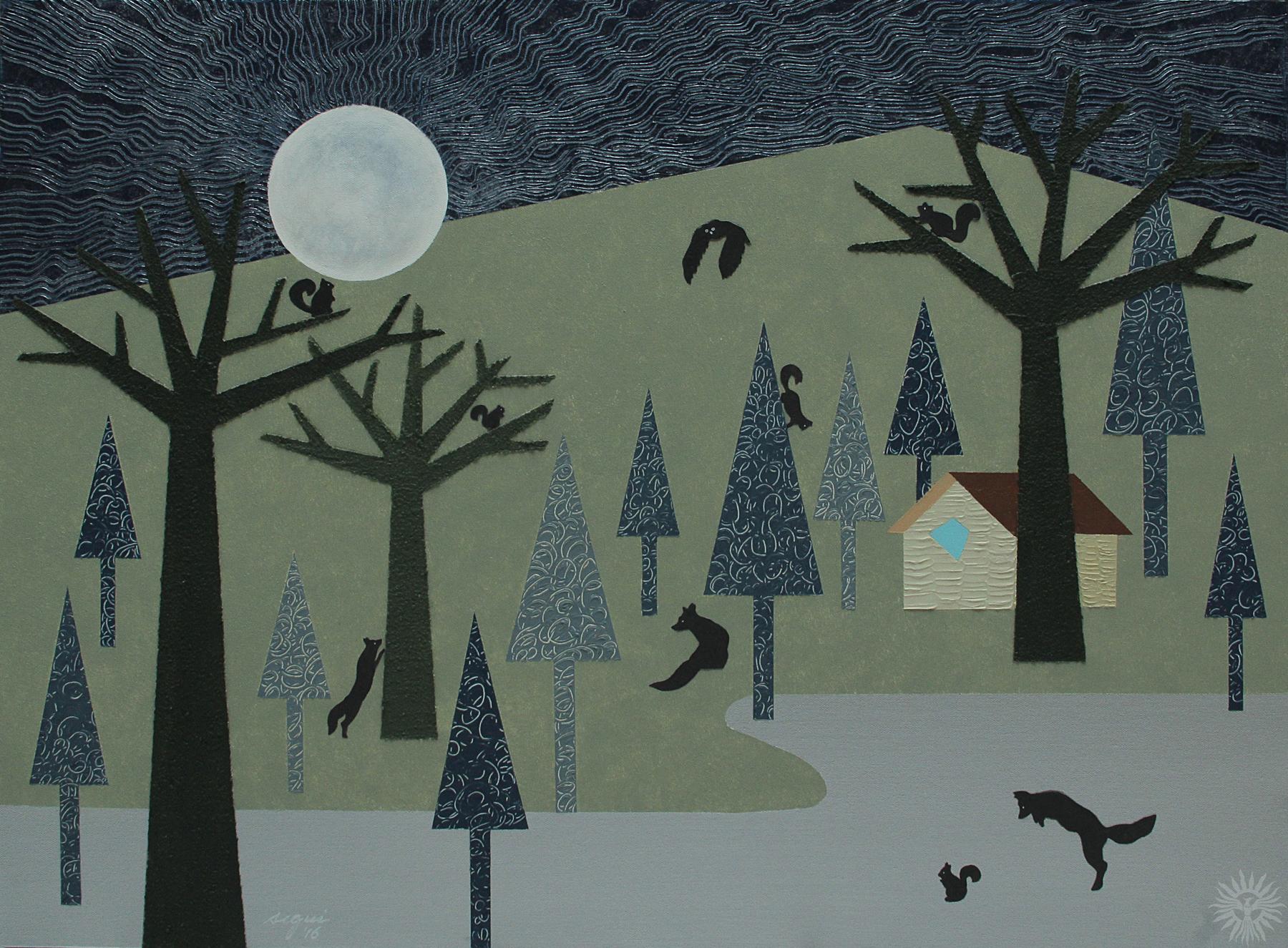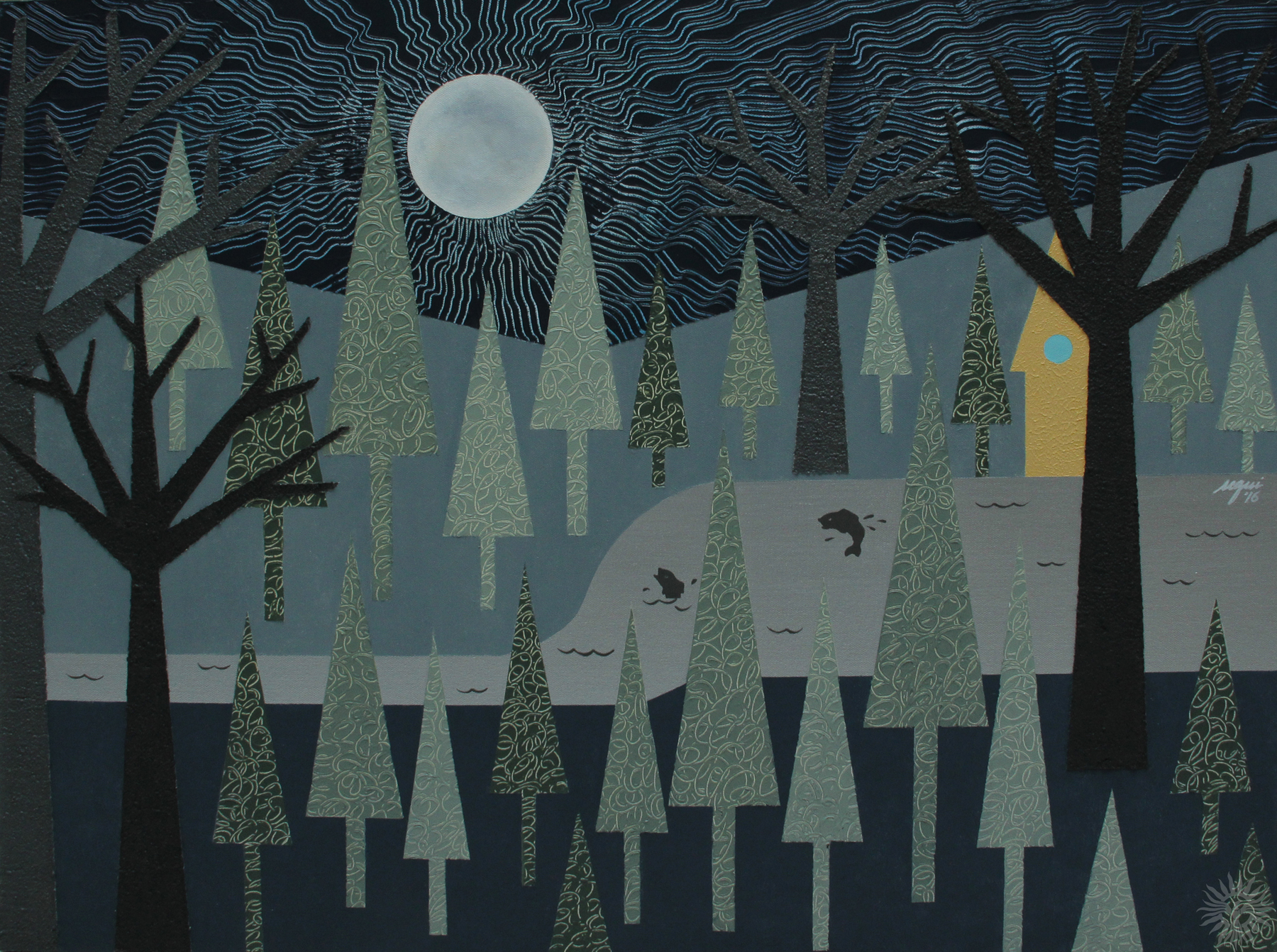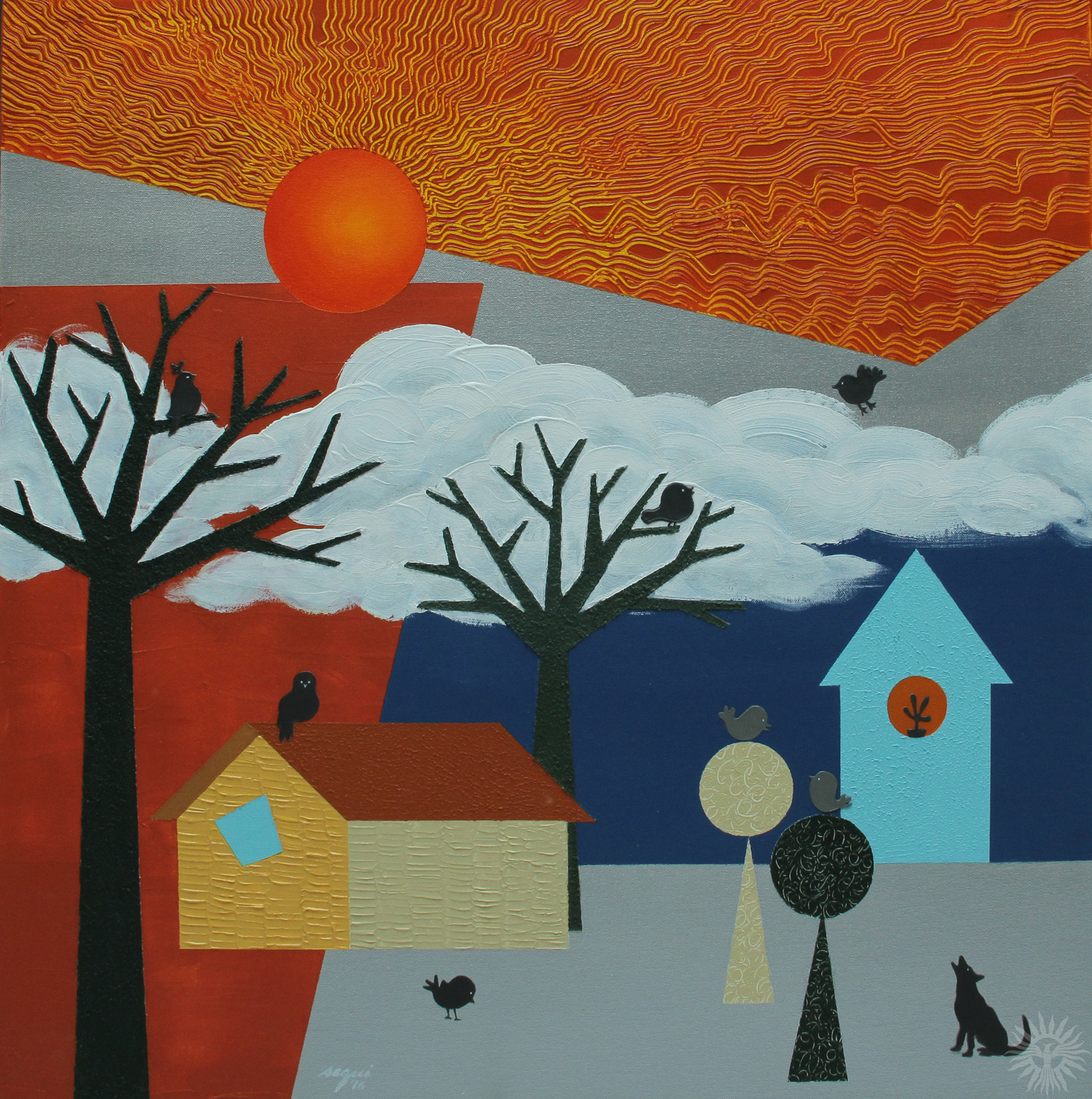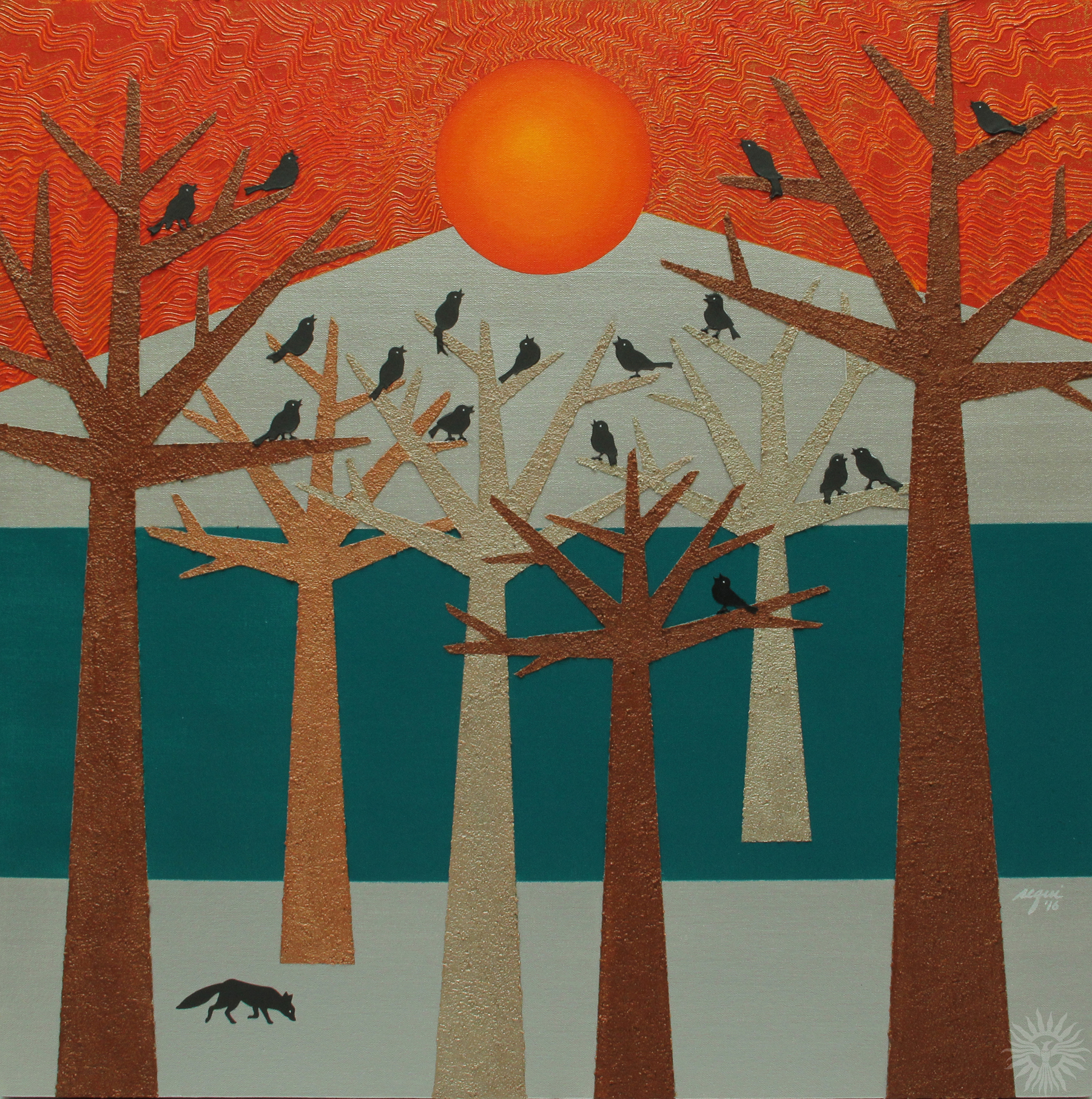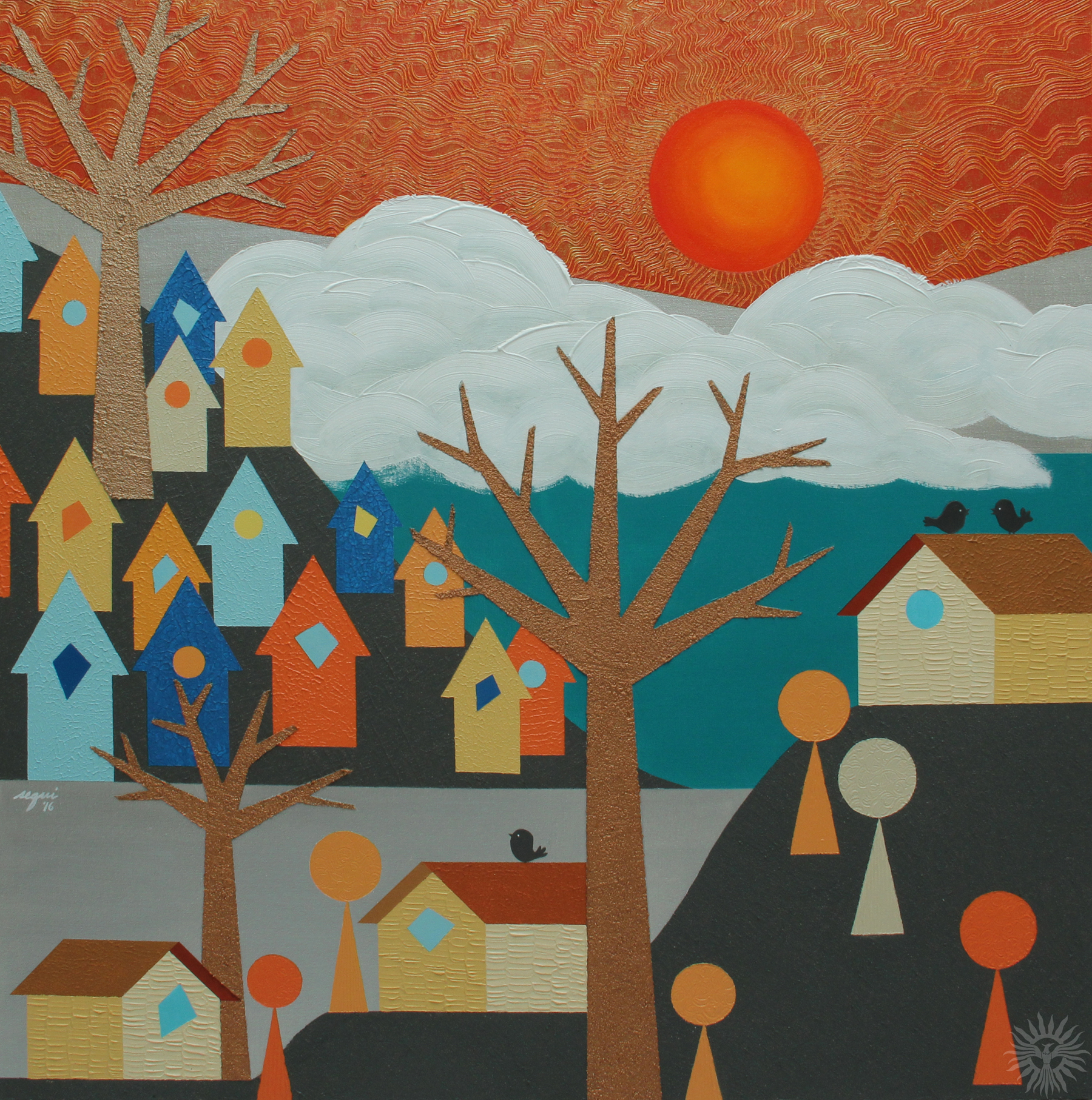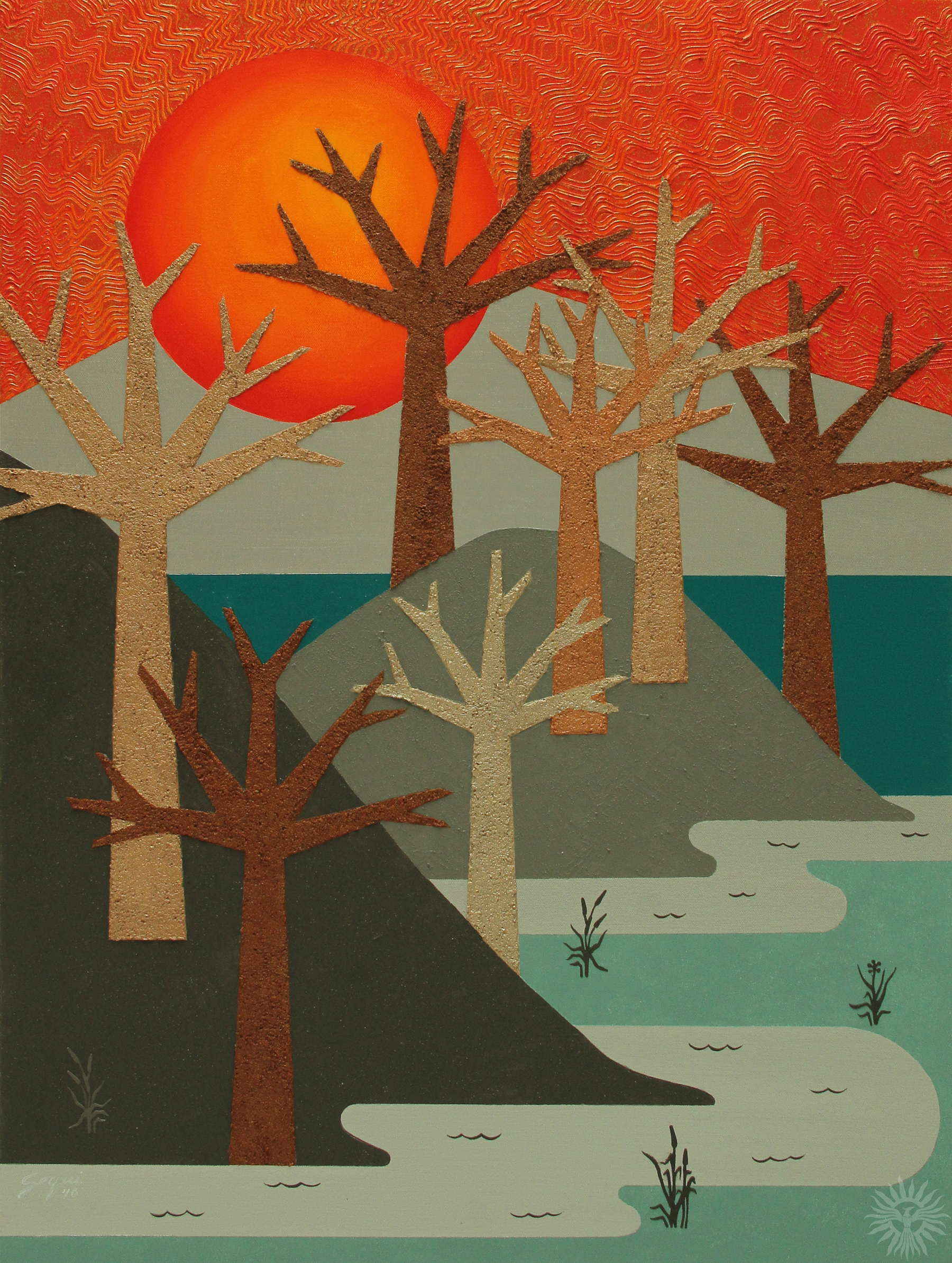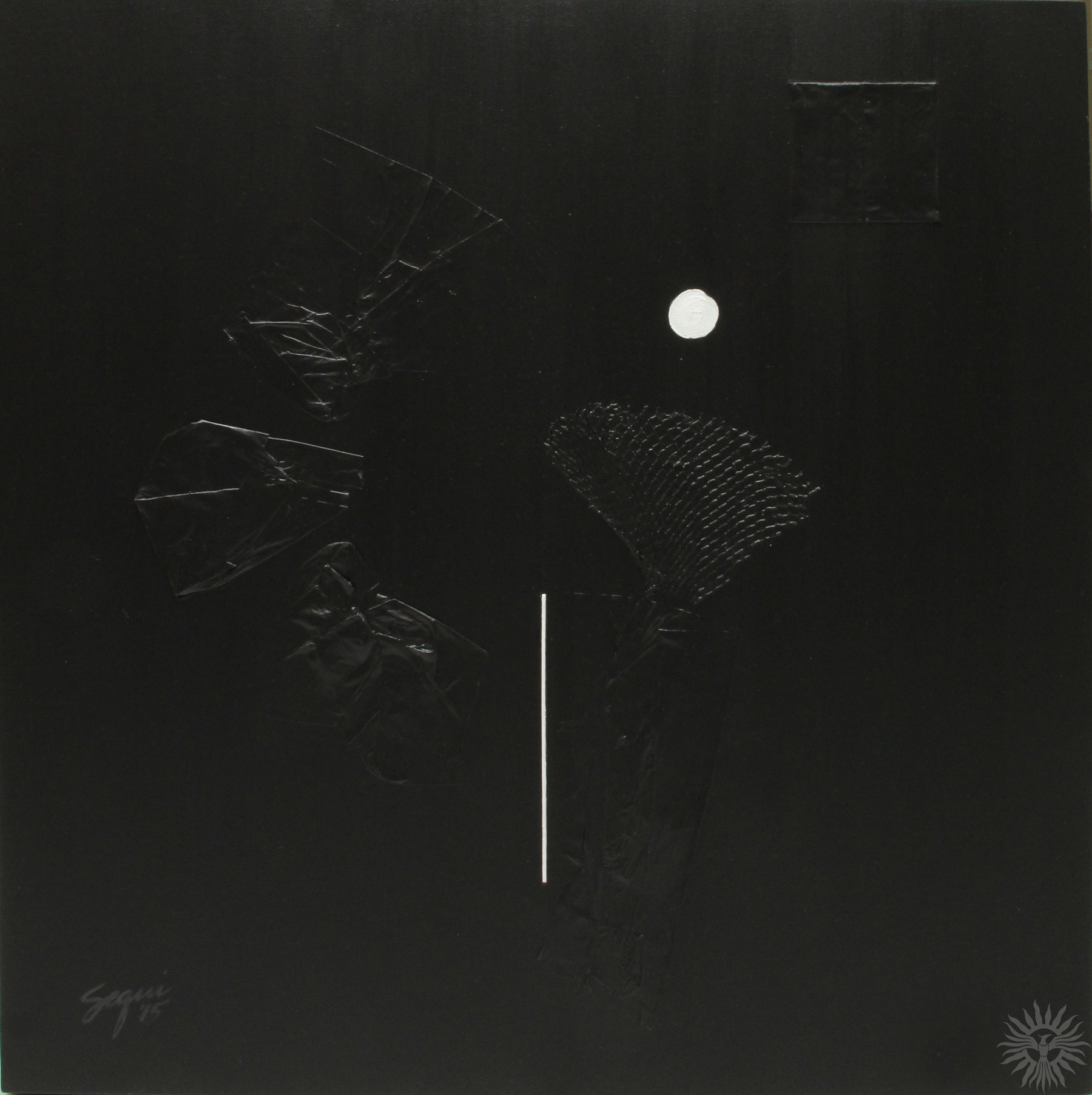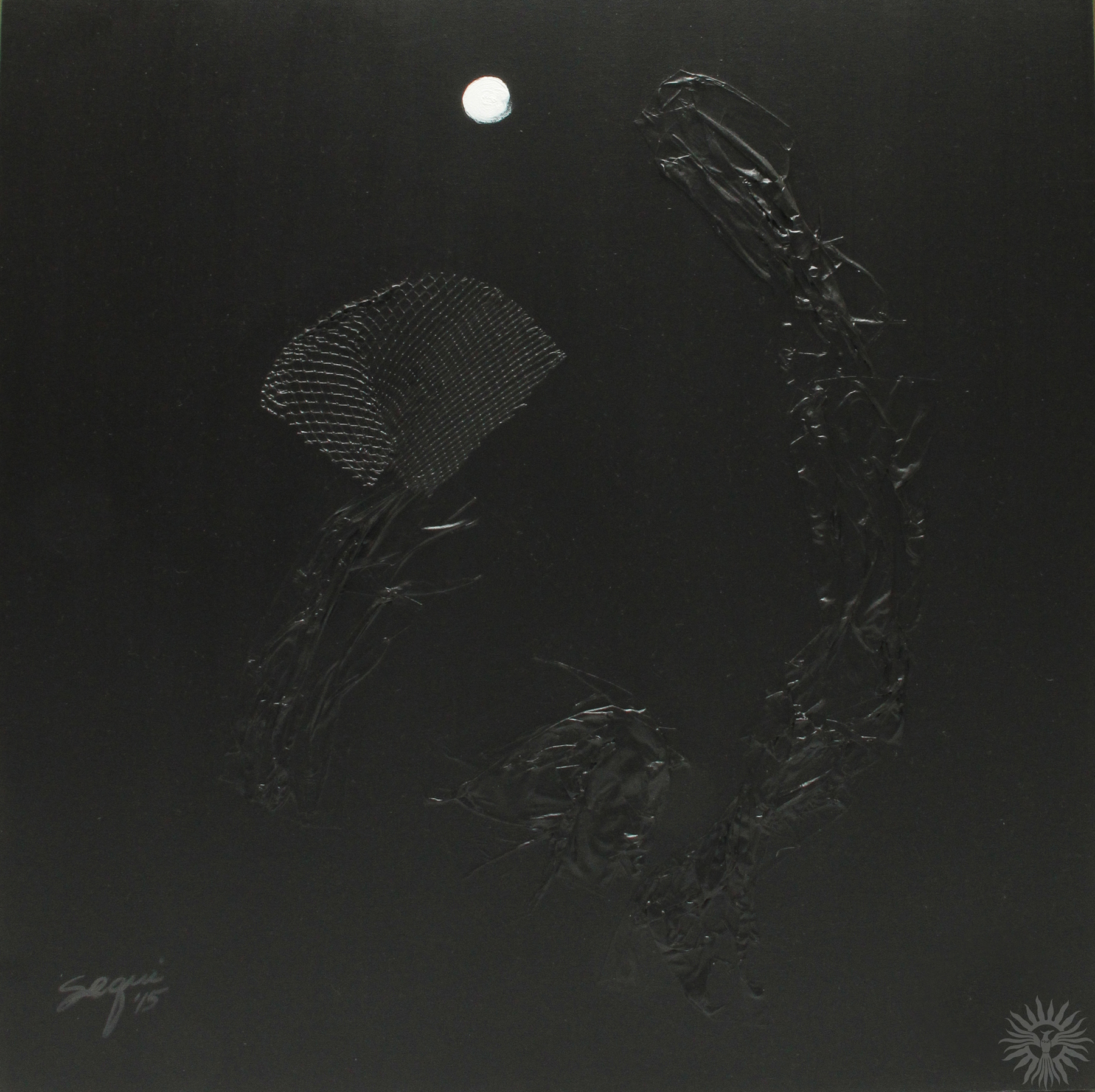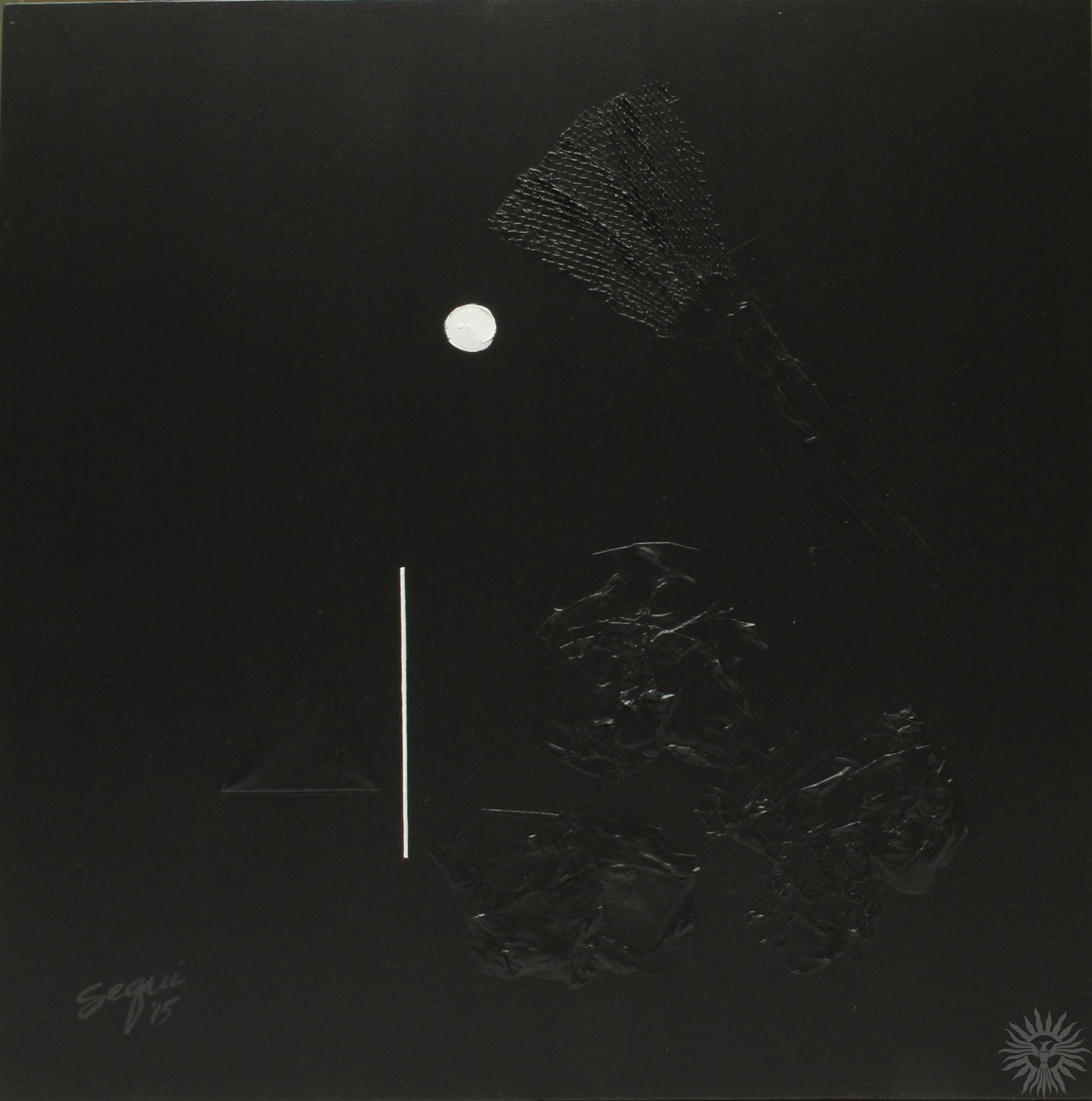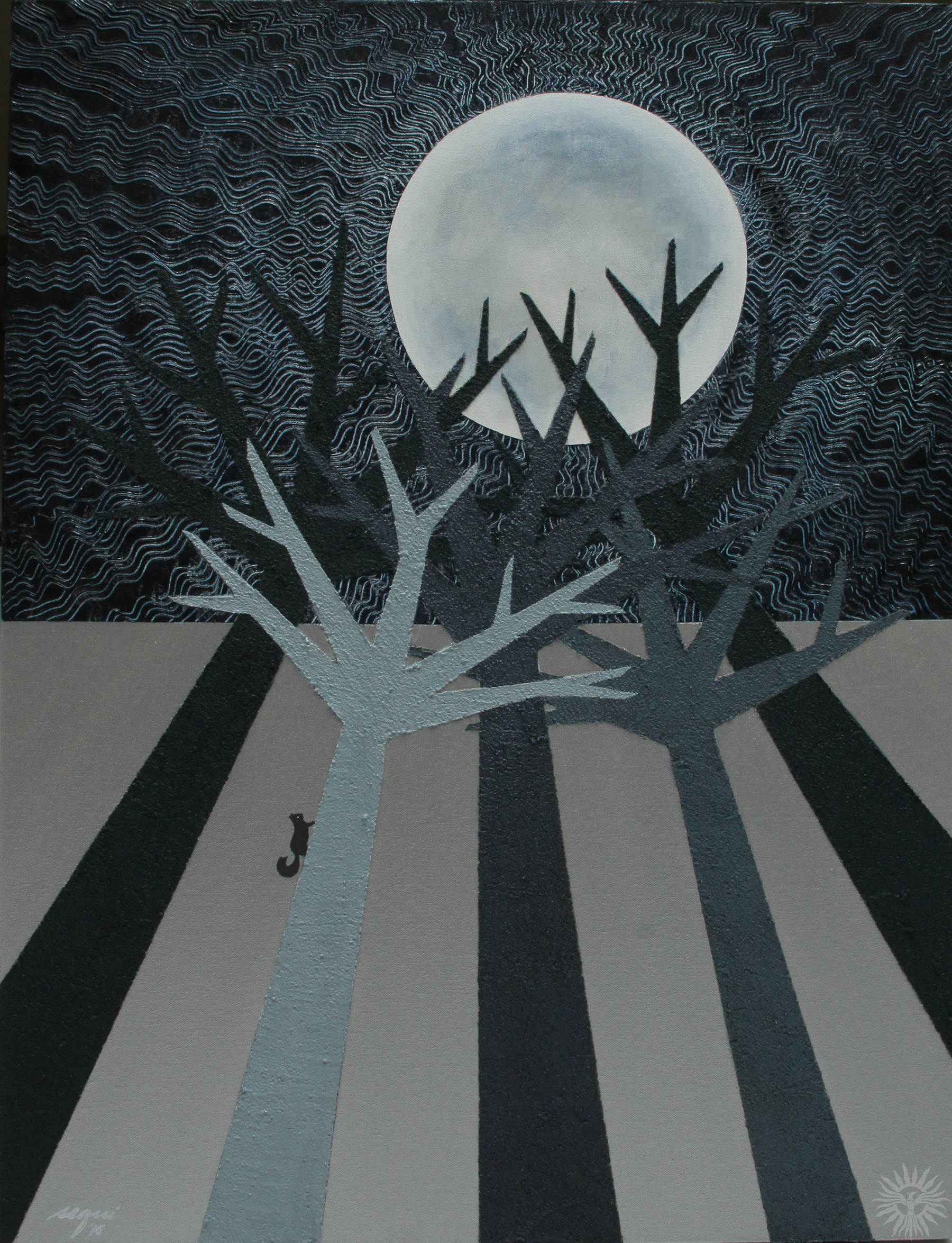One Fine Day
April 07, 2016 - May 07, 2016
Sequi Cu-Unjieng
Lobby Lounge, Makati Shangri-la Manila
“Curves are emotional!” declared the artist Piet Mondrian, the pioneer abstractionist who restored the order of the universe through the discipline of his black bands of verticals and horizontals, and the use of the primary colors red, blue, and yellow, harnessed through the rigorous use of the grid. Indeed, Mondrian even vanished from view the sight of diagonals. It was an art of extreme asceticism and elegant geometry, with no obligation to make any reference to the outside world or external reality. Mondrian’s style of painting was the ultimate extreme of Cubism, from whence he drew inspiration and illumination, in order to create a universe beyond the quotidian reality. It was a spiritual world where harmony reigns and purity is transformed into a classical puritanism of form. And yet despite the severity of his compositions, Mondrian’s paintings, with their imperturbable balance and weight of contained space and color, in perfect equilibrium, they have become, as proven by time, amongst the most beautiful creations of the imaginative mind. Indeed, Mondrian’s visual dialectics have influenced not only the world of painting, but also that of industrial and fashion design and architecture. One might say that Mondrian’s art was a “learning curve” which the world needed to know.
And just why precisely have we invoked the art of Mondrian in appreciating the current works Filipino artist Sequi Cu-Unjieng? In “One Fine Day,” her solo exhibition of recent works, let it be said at the outset, no serpentine, undulating lines or curves can be observed. Not only have they been dispensed with, they would have utterly altered the entire tone and sensibility of her works. For indeed, Sequi has formally subscribed to the rigid formality of geometric shapes, limned with straight lines, suspending squares, rectangles, and triangles in space, and judiciously deploying circles as moons and suns. How the artist manipulates these geometric elements and submits them to an overall composition that coheres together, is already a lesson in the formalization of design.
Sequi’s reigning format is the landscape, a genre of painting that locates nature as the presiding force, though a more specific view would be that of a countryscape: a vision of trees and houses, clouds and skies, on the verge of abstraction. It is to the artist’s credit that our eyes are taken in, not by the verticals of trees or the triangles of rooftops, but by its quality of innocent joy, of a pastoral neighborhood and community, with silhouettes of a howling dog and birds perched still on spreading branches, and which admittedly evokes a Western context, rather than a blazing tropical one. In Sequi’s views, one half expects a flurry of snow to suddenly descend and blanket the ground with blinding whiteness. This expectation should not come unbidden, as the artist herself has long established her family domicile in Vancouver, Canada, where she had studied at the prestigious Emily Carr Art Institute.
A couple of triptychs open into a radiant space, with the need to use this expansive format to contain a neighborhood, above which the roiling clouds engulf the skies. These views are archetypal scenes rather specific sites of memories, but they are first and foremost the artist’s response to the challenge of putting geometry at the service of representation. Perhaps it is not improbable that if another artist of a similar temperament, notably, National Artist Arturo Luz, renowned for his use of lines and geometry, was to address himself to this adventure, a similar visual expression will emerge. Luz had already proven it with his paintings of Asian temples, palaces, and fortifications.
Indeed, what surprised us most, was to learn that, previous to these geometric works, Sequi had worked in a totally different vein, truly a surprising antithesis. In a show titled “Reverie,” she had ventured into the disturbing waters of Surrealism. She had called it “an alternate reality (where) we seed this other cosmos” with “our eccentric notions and fleeting ideas.” Two of these works might serve notice that here in fact was an artist who was not to be so easily typecast. How prepared was the audience to see, in “They Came For Shoes,” an apparition of an overhead alien space-ship sucking upwards and sealing inside its belly a whirling harvest of high-heeled shoes? Or, as in “Eros,” a palpitating heart, as though wrenched fresh from a living, bleeding body, transformed into an octopus, flashing an evil eye, and whose sinister tentacles grip tightly on mysterious keys searching for a desired keyhole, at a safe distance away. Lyricism and fantasy, humor and eroticism, have sinuously converged in this one startling image. Spurred once by an advocacy to help raise awareness (and funds) for breast cancer prevention and treatment, Sequi produced a show titled “Transcending Boundaries,” where women’s breasts “in all their natural, non-surgically enhanced glory” were pressed against the canvas surface, leaving their visible imprint, both physical and psychical, of their “radiating strength and beauty.” Again, in these works, the artist’s singleness of purpose found actuality in the brilliant conceptual gesture of a defiant act that bared naked a woman’s pain as she bravely confronted the reality of her own mortality.
At this stage in her evolution, Sequi Cu-Unjieng has found fulfillment in every aspect of her life, as wife, mother, and artist. Indeed, she reminds us of the revered artist, the late Anita Magsaysay-Ho, who painted only after husband and children had left in the morning for work and school, and stopped in the late afternoon, instantly upon their arrival. (A sparkling trivia springs to mind: the fact that Anita Magsaysay-Ho herself once lived in Vancouver, Canada!). For both these women, Anita and Sequi, any new day that comes, when silence and solitude in their studio allow them to commune with their paintbrushes and their spirits, is always “One Fine Day
Cid Reyes is the author of coffeetable books on National Artists Arturo Luz, Bencab, J Elizalde Navarro and Napoleon Abueva. He received a Best in Criticism Award from the Art Association of the Philippines (AAP)


